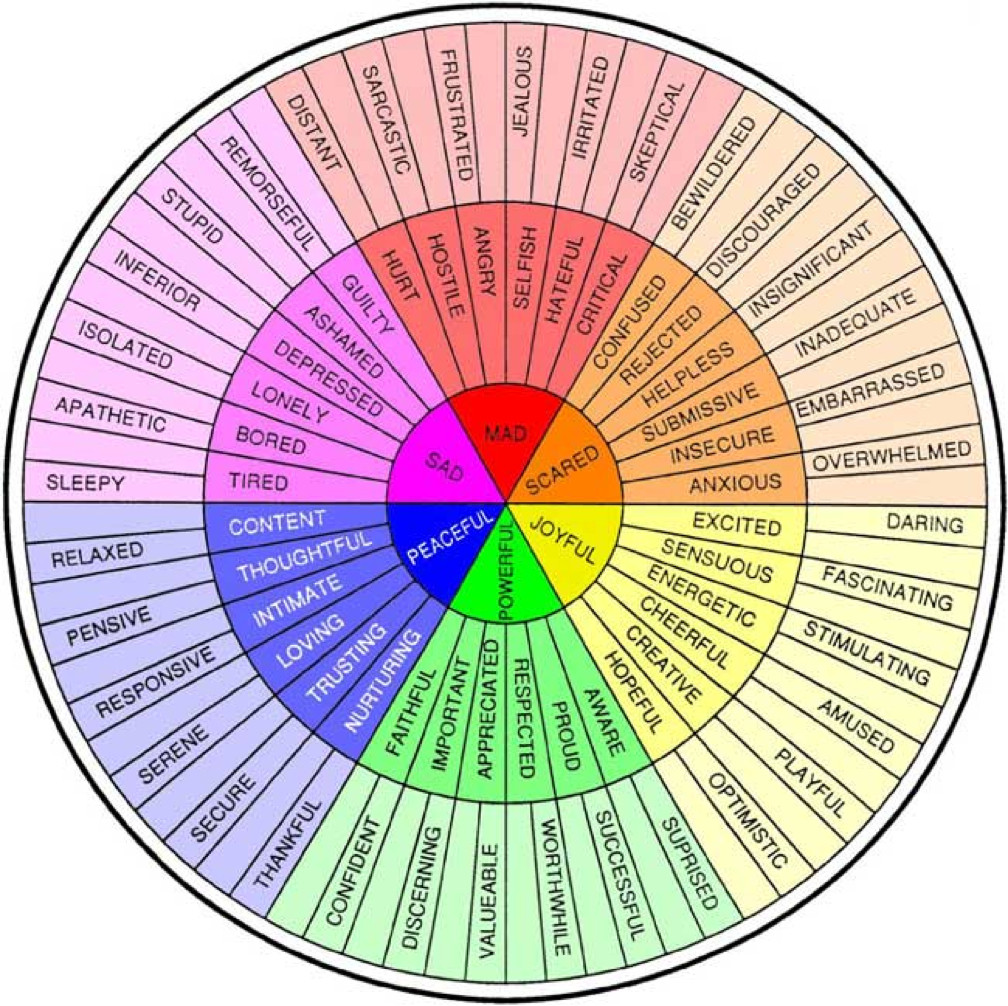Cultivating Emotional Intelligence via Feelings Wheel

In the dynamic ecosystem of the modern workplace, emotional intelligence (EI) emerges as a cornerstone of employee development. It’s not merely about being aware of one’s feelings but also about understanding, interpreting, and responding to the emotions of others.
Cultivating Emotional Intelligence Using the Feelings Wheel
The “Feelings Wheel,” a powerful tool designed by Dr. Gloria Willcox, can be instrumental in enhancing EI by helping individuals identify and articulate their emotions. This article delves into the practical strategies to develop an employee’s EI, with a focus on utilizing the Feelings Wheel to discern specific emotions.
Understanding the Feelings Wheel:
The Feelings Wheel is a visual aid that categorizes emotions to help people pinpoint how they are feeling. At the core are basic emotions like sad, mad, scared, joyful, powerful, and peaceful. Each of these core emotions fans out into nuanced feelings, providing a rich vocabulary for emotional expression. For instance, “angry” might extend into “frustrated,” “irritated,” or “livid.” This precision in emotional identification is a springboard for EI development.
Strategies to Develop Employee Emotional Intelligence:
- Emotion Identification Workshops:
- Conduct workshops where employees are introduced to the Feelings Wheel. Encourage them to explore different emotions and to practice articulating their feelings. Role-playing scenarios where employees must identify and respond to others’ emotions based on cues can enhance their emotional vocabulary and empathy.
- Emotion Journaling:
- Encourage employees to keep an emotion journal. By regularly charting their emotions on the Feelings Wheel, they can observe patterns and triggers in their emotional responses, fostering self-awareness — a core component of EI.
- Mindfulness and Reflection Exercises:
- Incorporate mindfulness practices that prompt employees to reflect on their emotional states. Guided meditations can be tailored to explore different spokes of the Feelings Wheel, teaching employees to sit with their emotions without judgment.
- EI Mentoring Programs:
- Pair employees with EI mentors who can provide guidance on navigating complex emotional landscapes. Mentors can use the Feelings Wheel to help mentees dissect and understand multifaceted emotional experiences.
- Feedback and Communication Training:
- Develop training modules that focus on giving and receiving feedback constructively. Use the Feelings Wheel to help employees express how certain interactions make them feel, promoting clear and empathetic communication.
- Conflict Resolution Role-Play:
- Simulate conflicts using role-play exercises, where participants must use the Feelings Wheel to articulate their emotional responses during confrontation. This helps in understanding the emotional perspectives of others and in honing negotiation skills with emotional intelligence.
- Team-Building Activities:
- Design team-building exercises that require emotional intelligence, such as collaborative problem-solving or trust-building activities. The Feelings Wheel can be used to debrief, encouraging teams to discuss the emotional dynamics of their interactions.
- Leadership EI Coaching:
- Provide specialized EI coaching for leaders, focusing on how they can recognize and address the emotions of their team members. Leaders can use the Feelings Wheel to better understand their own leadership style and its emotional impact.
Developing emotional intelligence in employees is not a one-off effort but an ongoing process that requires commitment and practice. The Feelings Wheel is a remarkably simple yet profound tool that can enrich this process.
By recognizing and understanding the specific emotions they and their colleagues experience, employees can navigate the complexities of workplace relationships with greater empathy, leading to a more cohesive, productive, and supportive work environment.
As they become more adept at using the Feelings Wheel, employees not only enhance their professional relationships but also contribute to a culture of emotional intelligence that can define the organization’s success.
Check out The Corporate Warrior for more ways to enhance your emotional strength.


